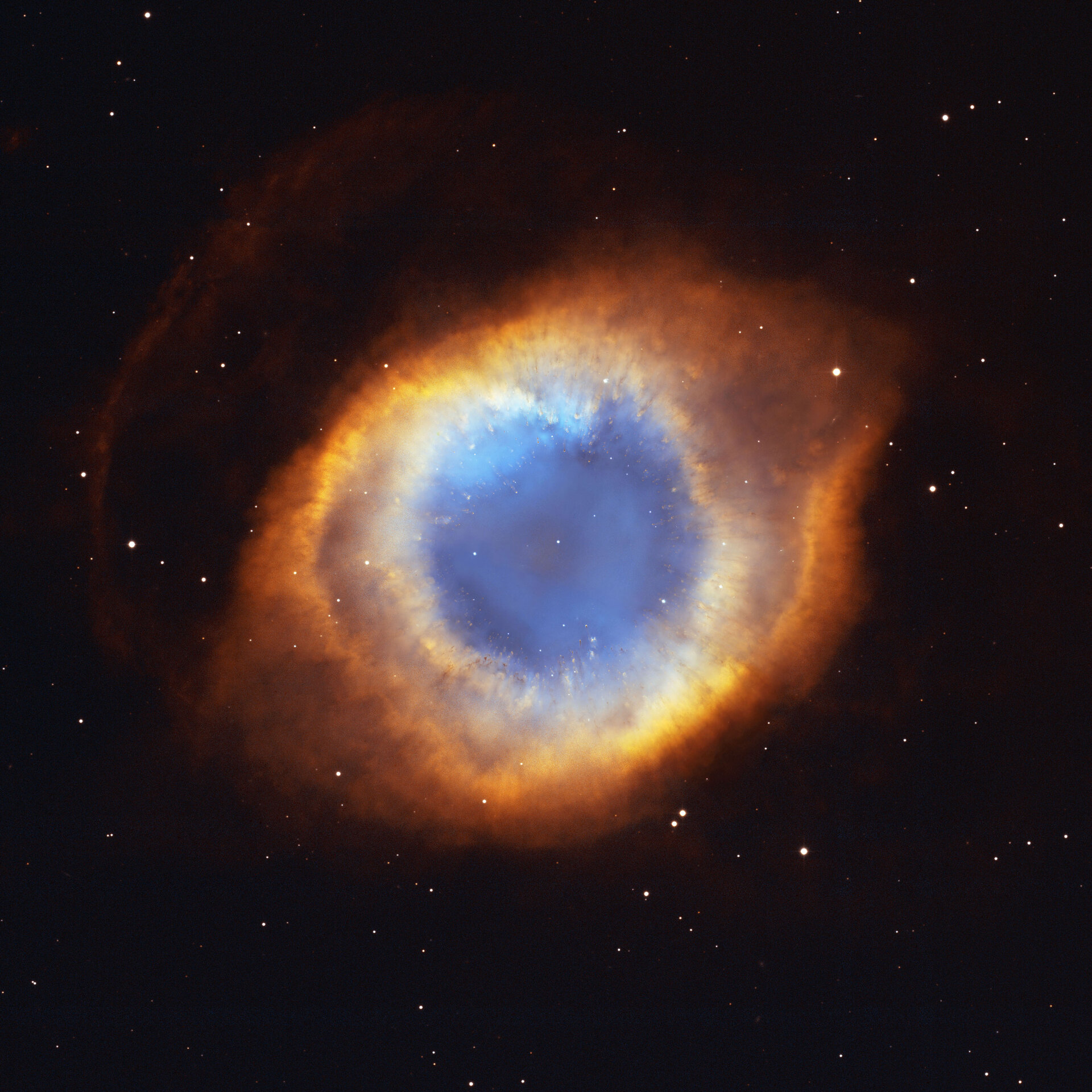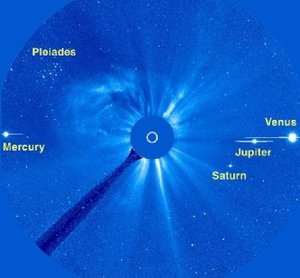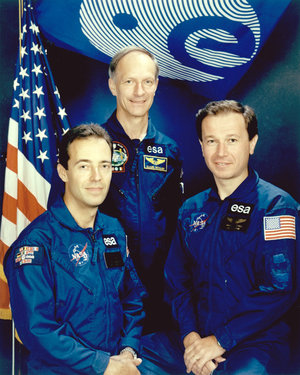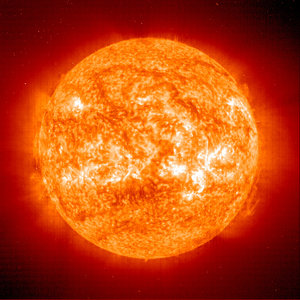9 May
2003: On 9 May 2003, astronomers unveiled one of the largest and most detailed celestial images ever, the coil-shaped Helix Nebula, to celebrate Astronomy Day.
This NASA/ESA Hubble Space Telescope image shows a fine web of filamentary 'bicycle-spoke' features embedded in the colourful red and blue gas ring, which is one of the nearest planetary nebulae to Earth. The nebula is nearby so it is nearly half the size of the diameter of the full Moon. Hubble astronomers took several exposures with the Advanced Camera for Surveys to capture most of it. They then combined Hubble views with a wider photo taken by Kitt Peak's Mosaic Camera.
The result is a breathtaking look down a tunnel of glowing gases that is millions of kilometres long. The fluorescing tube is pointed nearly directly at Earth, so it looks more like a bubble than a cylinder. Thousands of comet-like filaments embedded along the inner rim of the nebula point back toward the central star, which is a small but superhot white dwarf. These tentacles formed when a hot stellar 'wind' of gas ploughed into colder shells of dust and gas previously ejected by the doomed star. Astronomers have known about these comet-like filaments from ground-based telescopes for decades but have never before seen them in so much detail. The filaments may lie in a disc around the hot star, like a collar.











